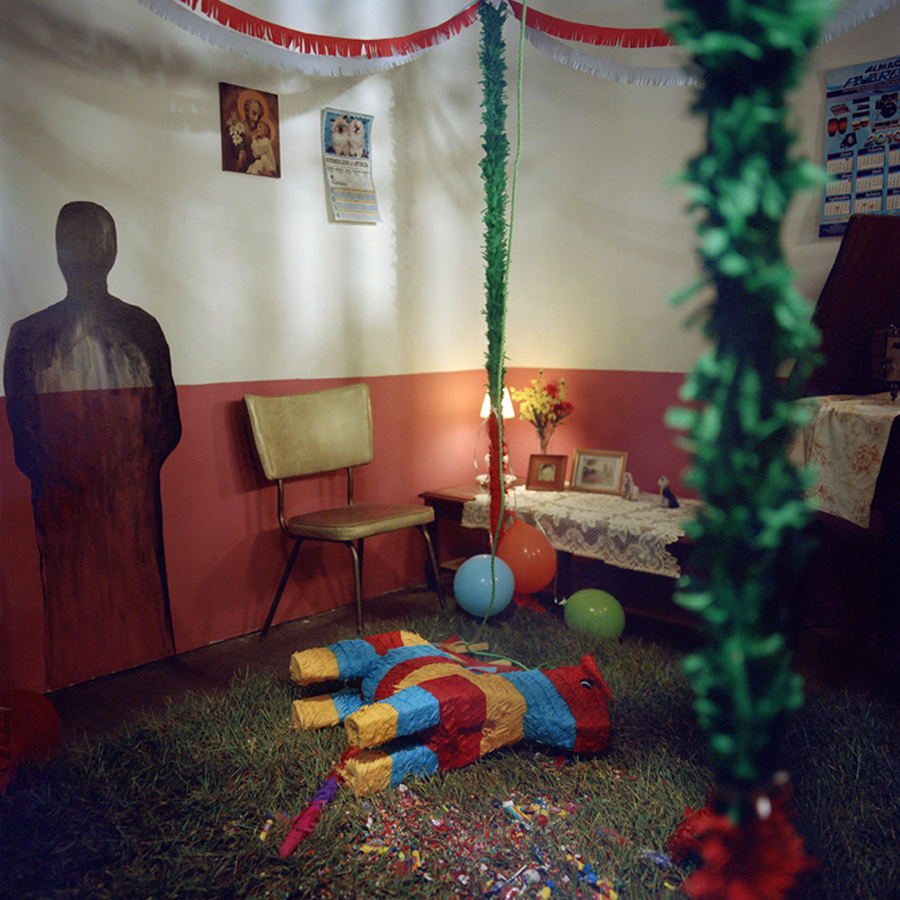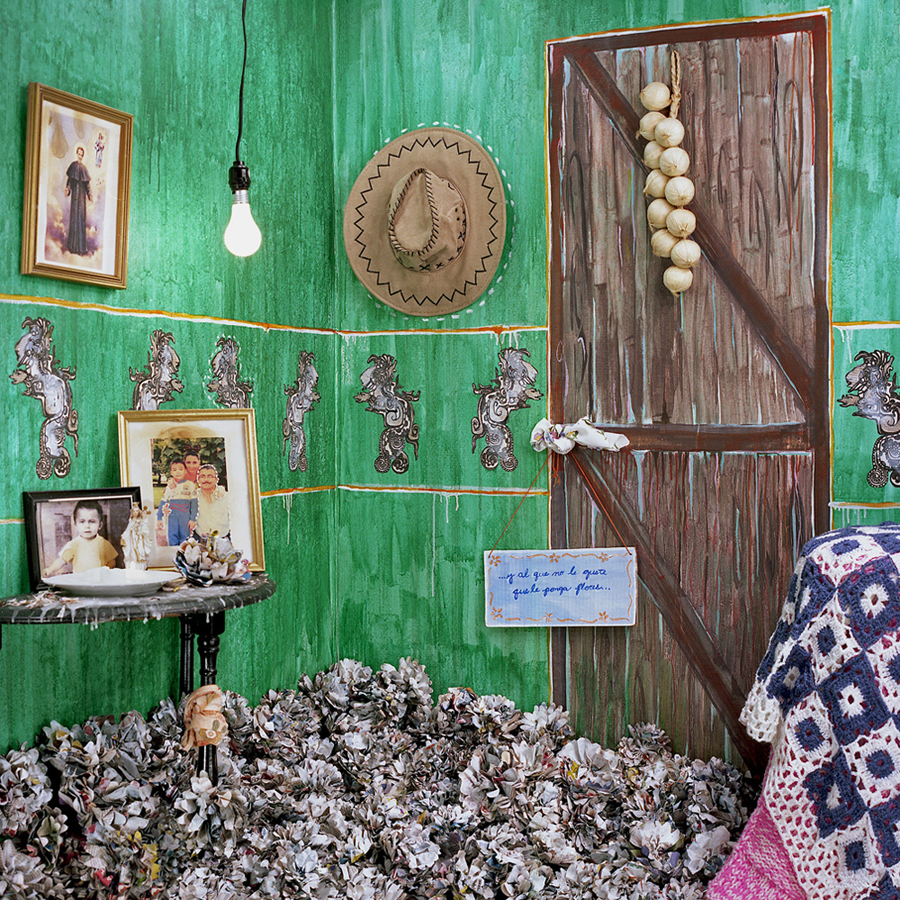Celdas
This series addresses the alienation, fear, and displacement Hondurans experience as a consequence of the unspeakable violence, poverty, and political instability which has taken over their country. The cycle is repeated as they seek refuge in the U.S. and face anti-immigrant policies and political rhetoric that dehumanizes central Americans.
The research-based tableaus, which I construct throughout the U.S. and then document (mostly on 120 film) with an image as the final form, are counter-narratives to direct representations of violence in the media. The nomadic process of this work helps me to better understand and effectively convey the psychological trauma individuals experience as they arrive in the U.S.
An important aspect of my work is the tension between cultural assimilation and the persistence of cultural identity and memory. “The presence of specific objects such as CD’s, flowers or candles, solicit an intimacy with the most private aspects of the lived experience” (1). By bringing natural elements such as tree leaves, sand, and found materials into my constructed stages, I recall the individual’s capacity of make-do.
Through magical realism, the vernacular spaces blur the line between fiction and reality, introducing a dimension of pathos as these spaces recall the need for sanctuary while alluding to coping mechanisms. To further this sense of poignancy, the play-scapes or scenes are informed by actual violent crimes, memorializing some of the victims caught up in the endless cycle. The convergence of the public space and crime-site elements with the domestic space suggest the inevitability of violence's reach. The juxtaposition of Catholic and Maya iconography evokes the legacy of Spanish colonialism while also reminding us that the history of violence in Central American societies has deep historical roots which predate the Conquest.
1. Excerpt from Tatiana Reinoza’s Counter-Archives to the Narco City 2015 exhibition catalog
Honduran-born Alma Leiva received a BFA from New World School of the Arts in 2007 and an MFA from Virginia Commonwealth University in 2011. She has exhibited her work nationally and internationally in venues such as The Invisible Dog Art Center, Brooklyn, NY; Hasted Kraeutler, New York, NY; Philadelphia Photo Arts Center, Philadelphia, PA; The Center on Contemporary Art, Seattle, WA; Houston Center for Photography, Houston, TX; Museum of Contemporary Art, North Miami, FL; David Castillo Gallery and The Museum of Art and Design, Miami, FL; Samuel Dorsky Museum of Art, New Palz, NY; The Zuccaire Gallery, Stony Brook, NY; The Snite Museum of Art, South Bend, IN; The Center for Photography at Woodstock, New York; Balzer Projects, Basel, Switzerland; Positions, Berlin, Germany; and Museo de Arte y Diseño Contemporáneo, San José, Costa Rica.
She has completed residencies at Vermont Studio Center, Johnson, VT; Arteles, Haukijärvi, Finland; Atlantic Center for the Arts, New Smyrna Beach, FL; The Center for Photography at Woodstock, NY; Byrdcliffe Guild, Woodstock, NY; The MacDowell Colony, Peterborough, NH, Yaddo, Saratoga Springs, NY; Southern Constellations at Elsewhere, Greensboro, NC; and Ragdale, Lake Forest, IL.
Leiva’s work is in private and public collections including The University of West Florida, The Center for Photography at Woodstock, Smith College Museum of Art, and Elsewhere Museum.
Her work has been featured in numerous publications including TIME LightBox, Photo District News, The Huffington Post, Newsweek, Miami New Times, El Nuevo Herald, The Miami Herald, ArtPulse Magazine, and Art Nexus. Leiva lives and works in Miami.

















